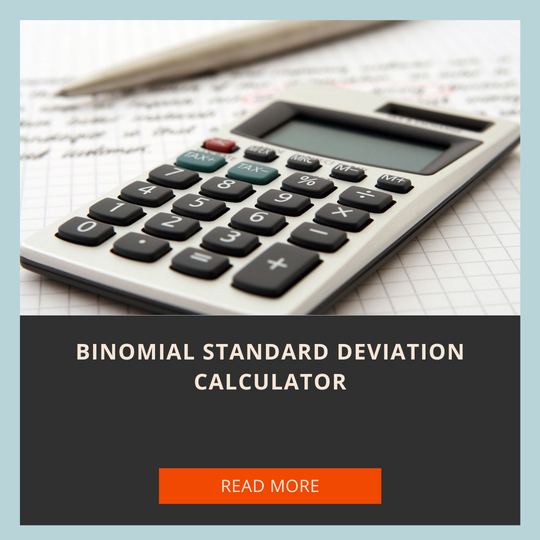Input Parameters
The Binomial Standard Deviation Calculator requires two essential input parameters to compute the standard deviation:
- Success Probability (p):
- Start by entering the probability of success for a single trial. This probability should be a value between 0 and 1, inclusively. For instance, if the probability of success is 0.5, input "0.5" into the provided field.
- Number of Trials (n):
- Next, input the total number of trials or experiments you're conducting. This input should be a positive integer, such as 10, 20, or any other relevant value based on your scenario.
Calculate Standard Deviation
After entering the necessary input parameters, click the "Calculate" button to initiate the computation of the standard deviation.
Interpret the Results
The calculator will compute and display the standard deviation (σ) for the given binomial distribution based on the provided success probability (p) and number of trials (n). The standard deviation is a measure of the amount of variation or dispersion in the data set. A higher standard deviation indicates greater variability, while a lower standard deviation implies less variability.
Additional Tips and Insights
- Understanding Standard Deviation:
- Standard deviation is a crucial statistical measure used to assess the amount of variation or dispersion in a set of data. In the context of a binomial distribution, it helps in understanding the spread of successes and failures across the given number of trials.
- Interpretation:
- A smaller standard deviation implies that the outcomes are closer to the mean or expected value, indicating a more consistent and predictable distribution. Conversely, a larger standard deviation suggests a broader range of possible outcomes, representing a more diverse distribution.







